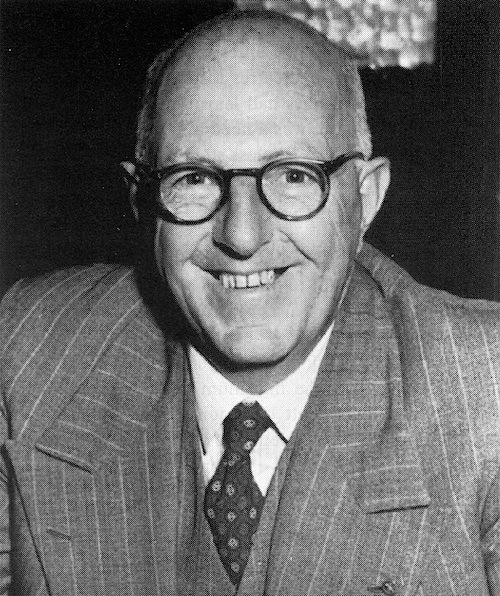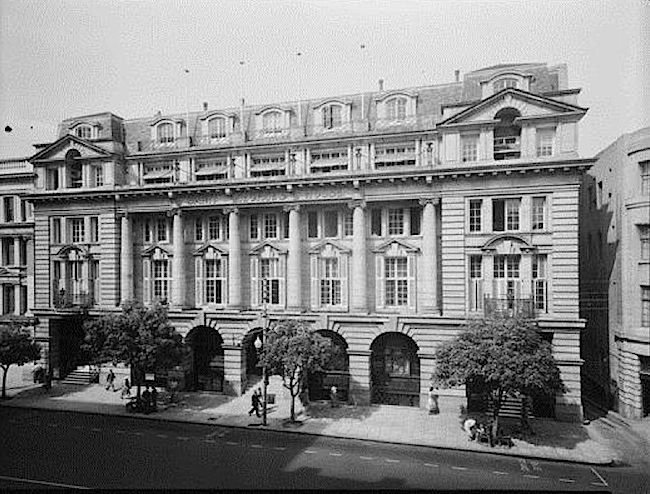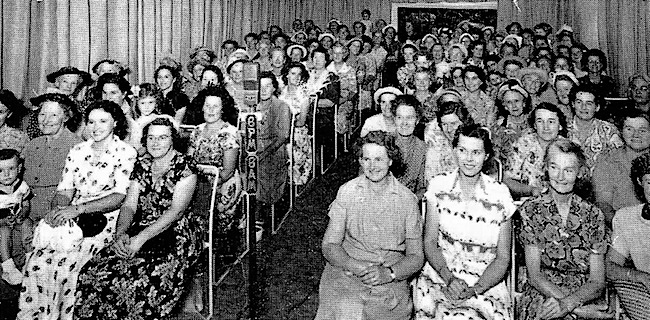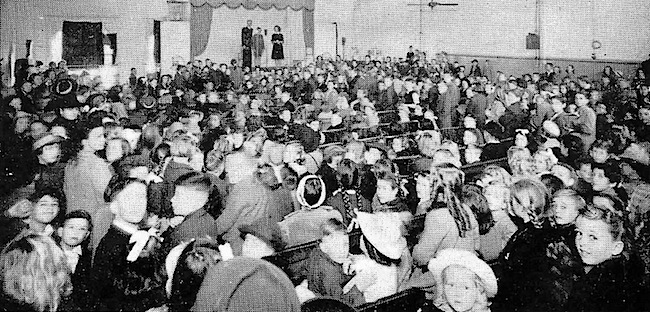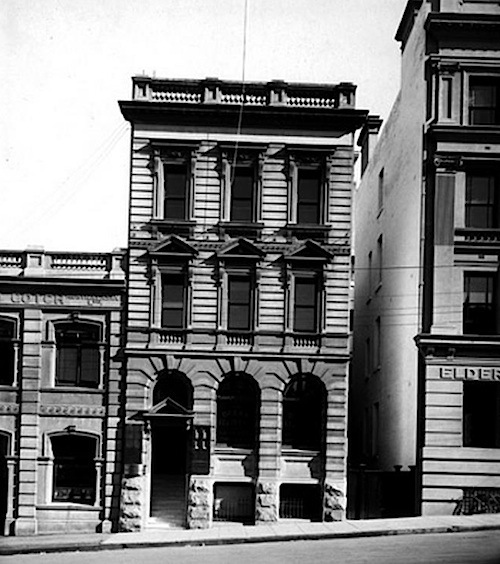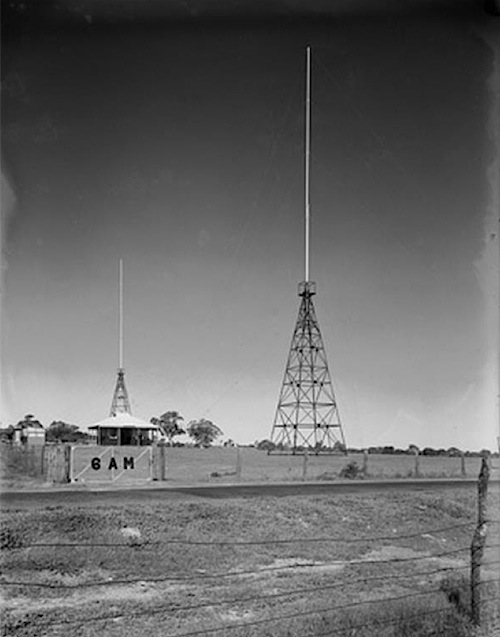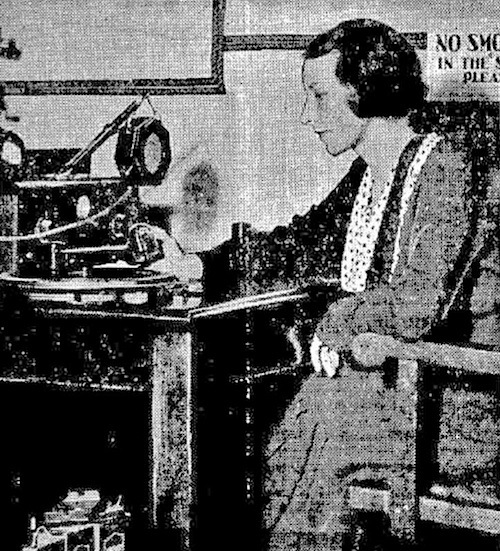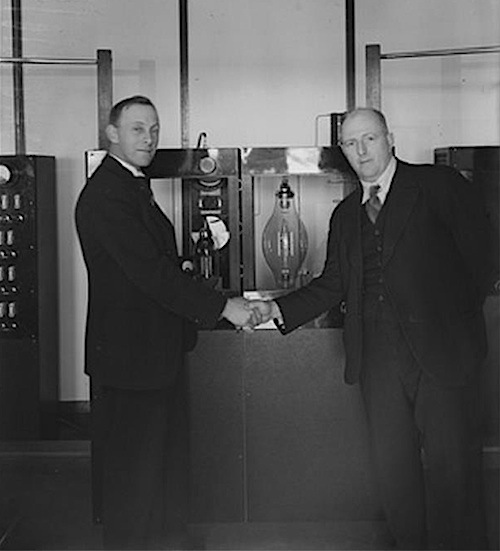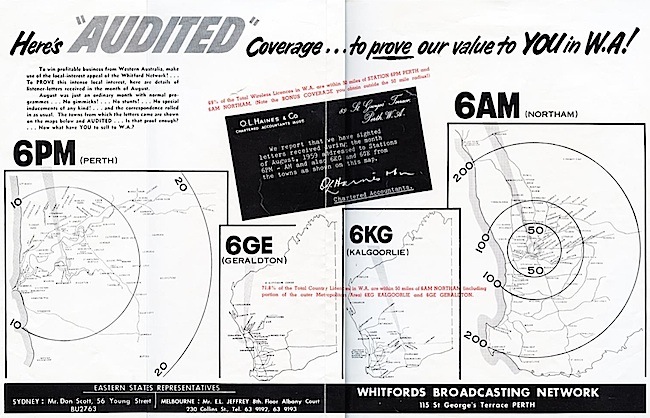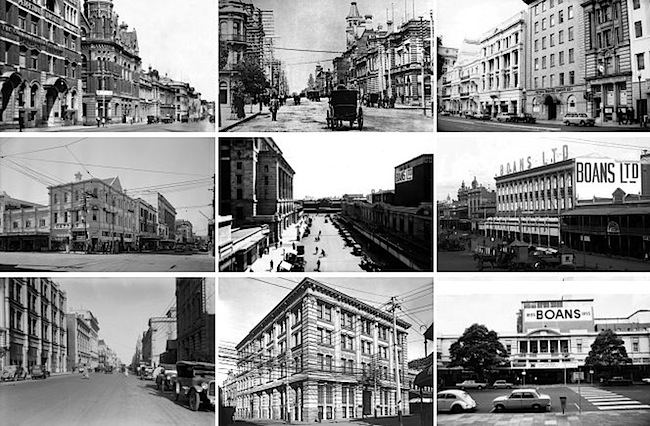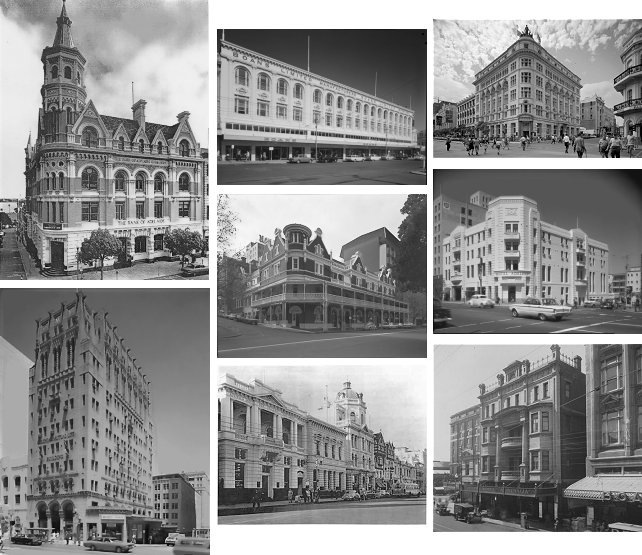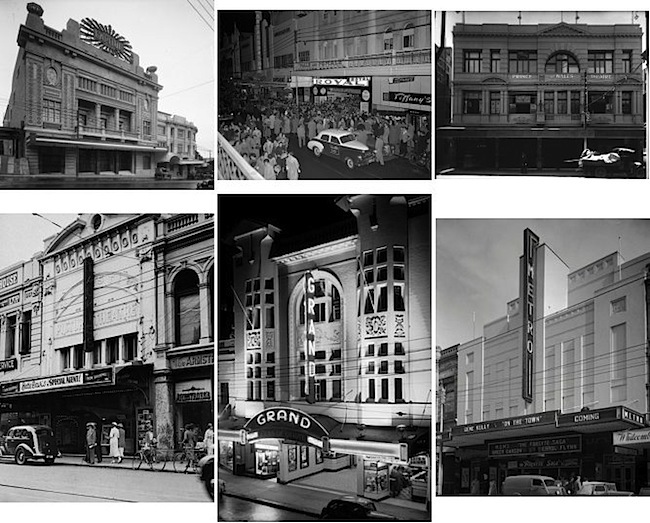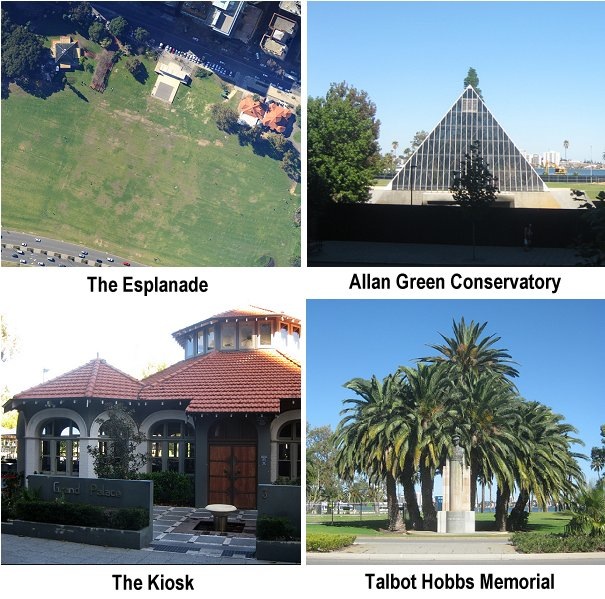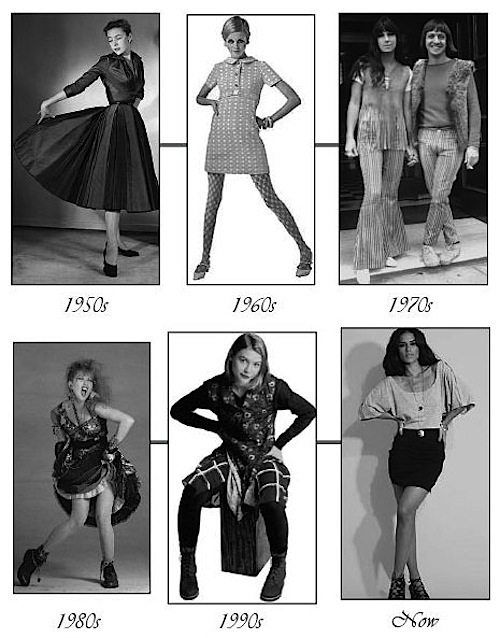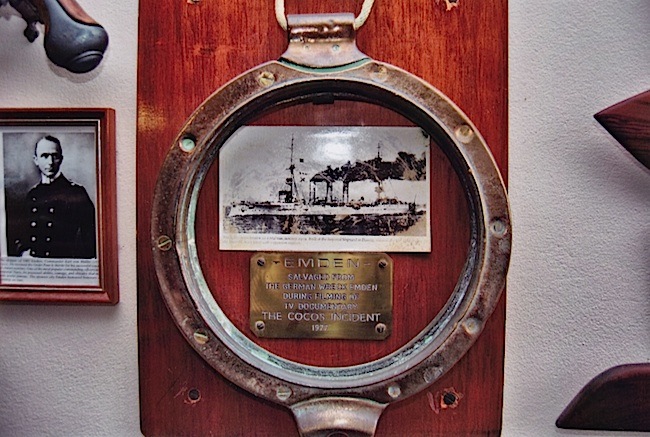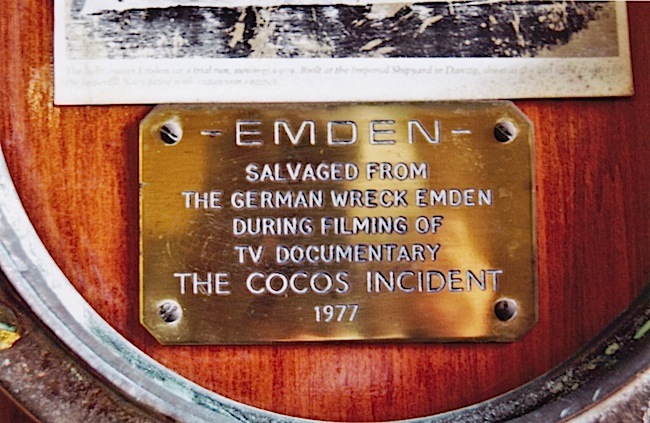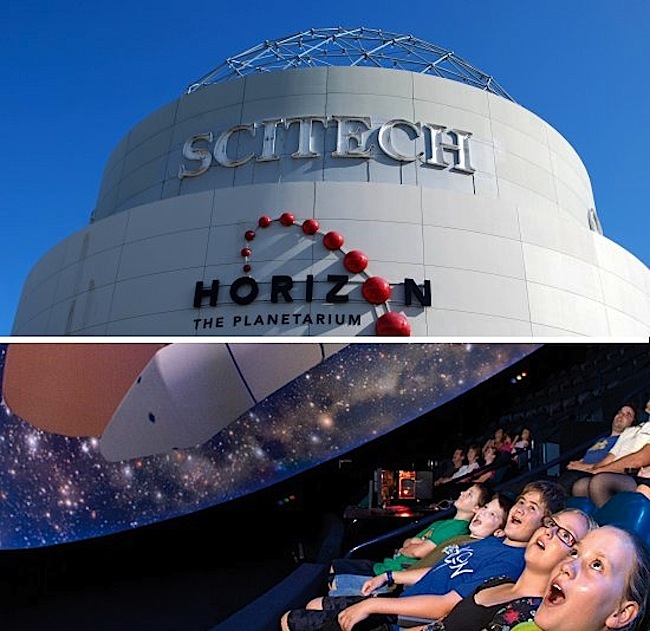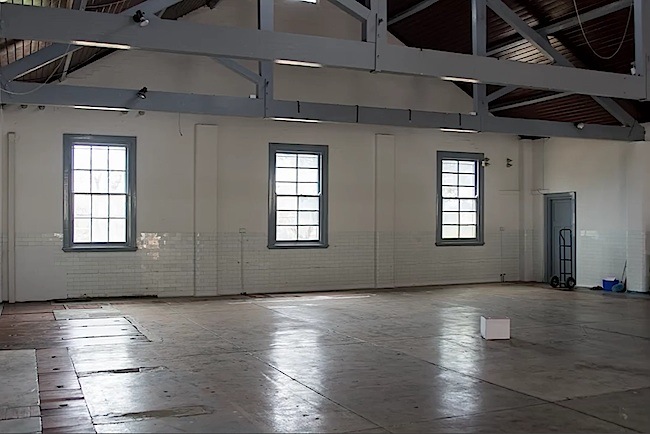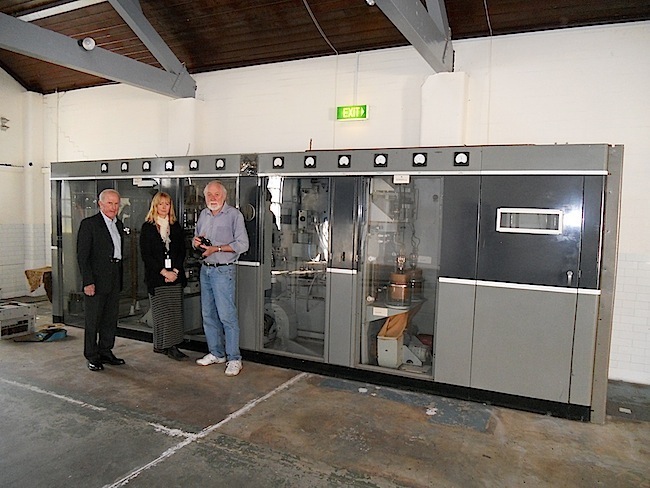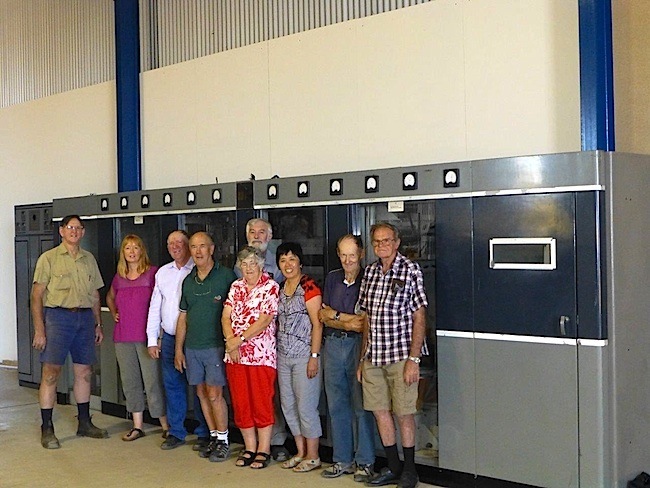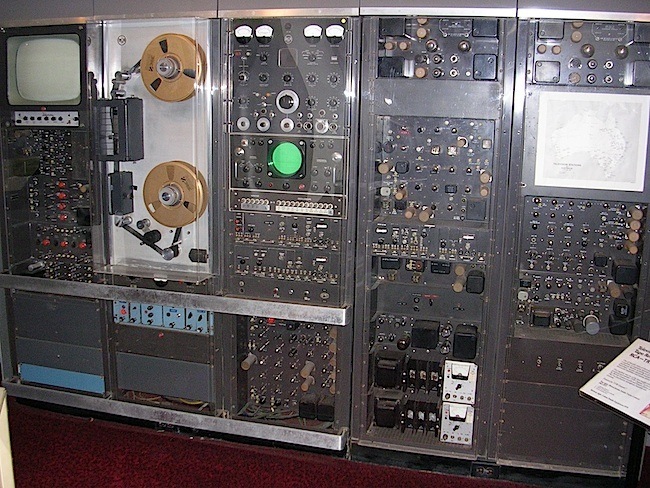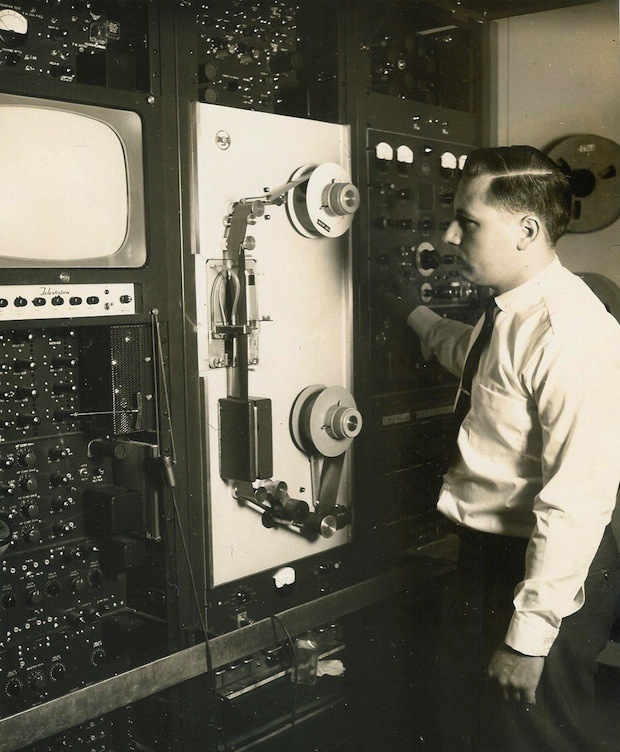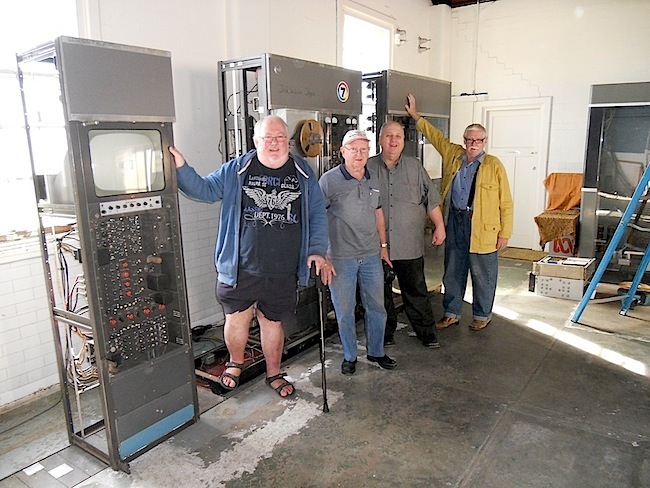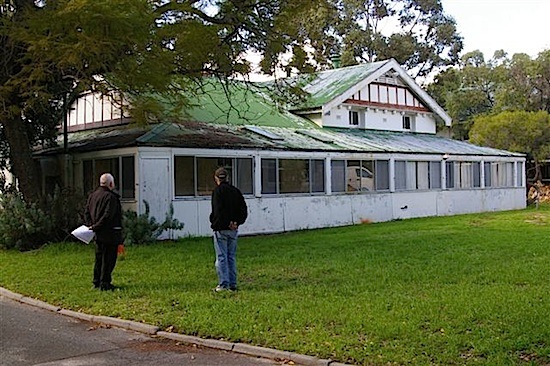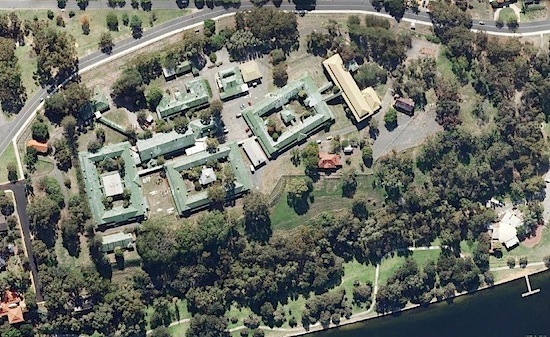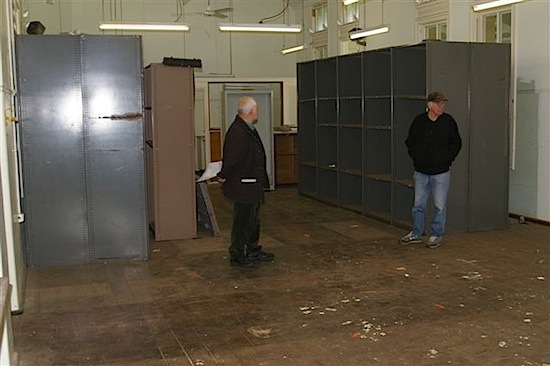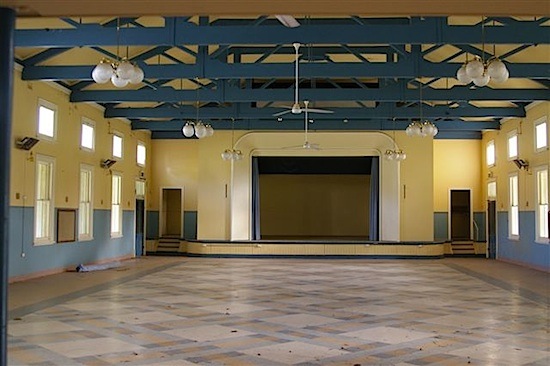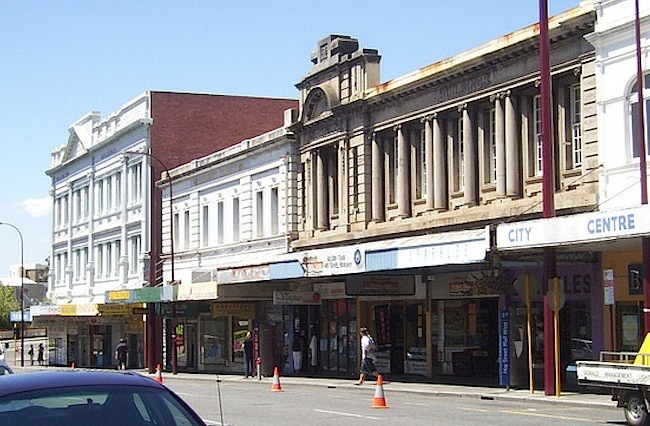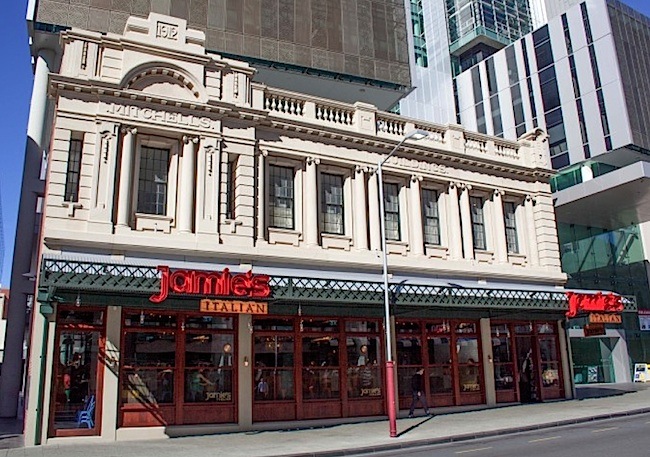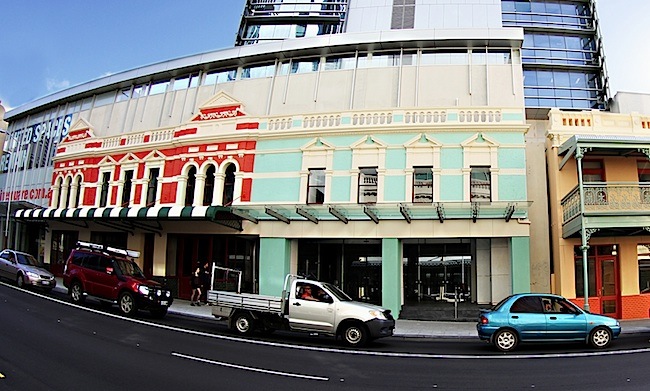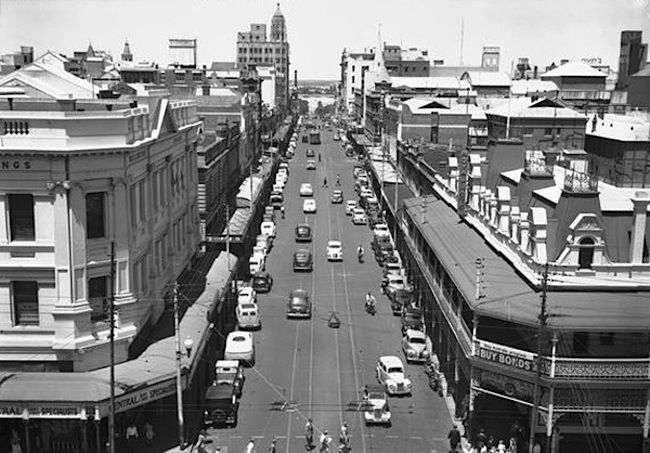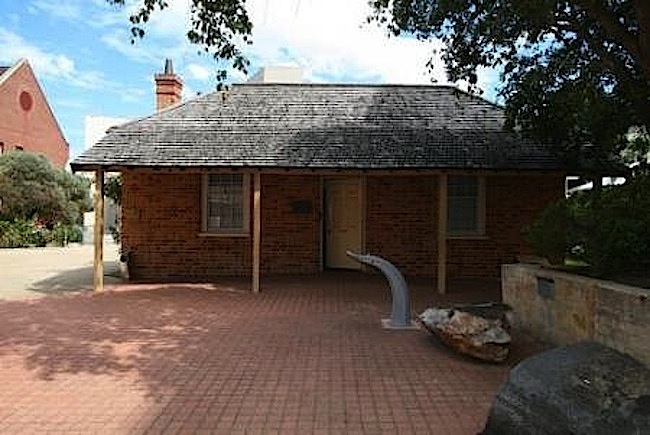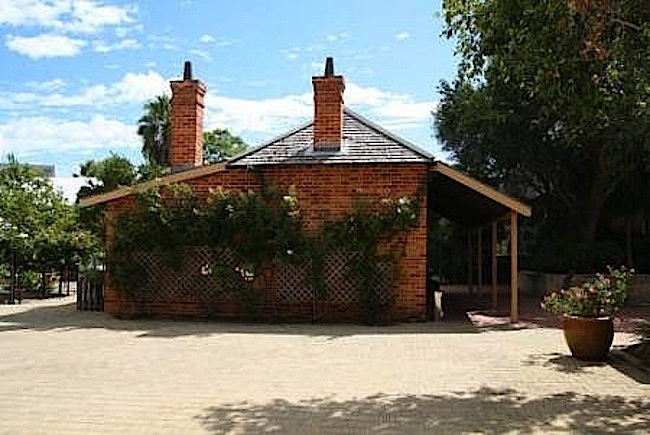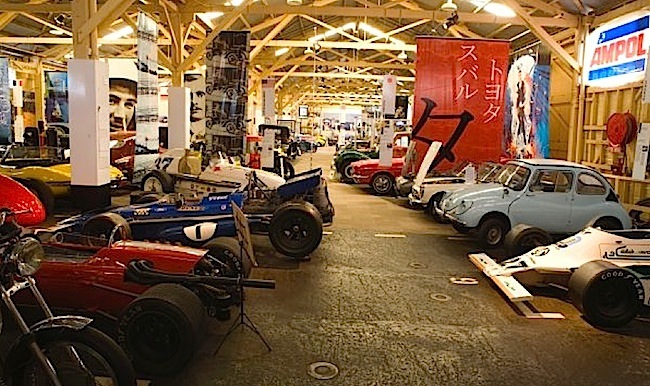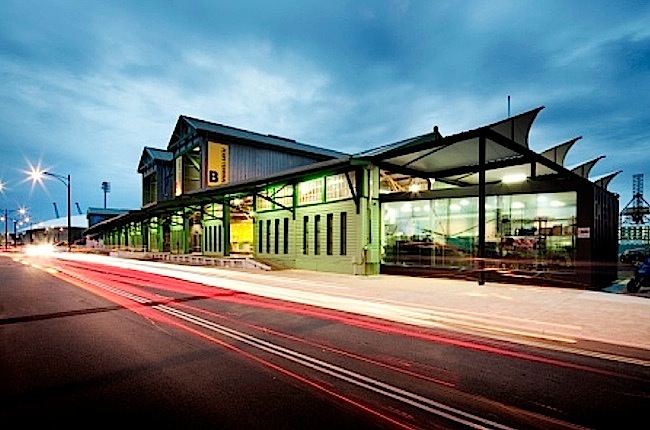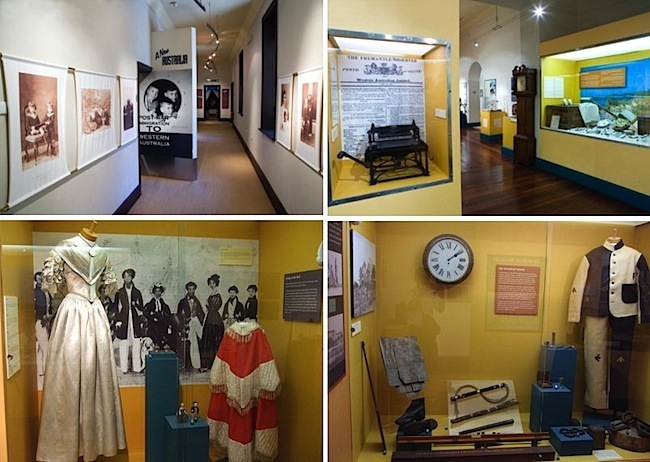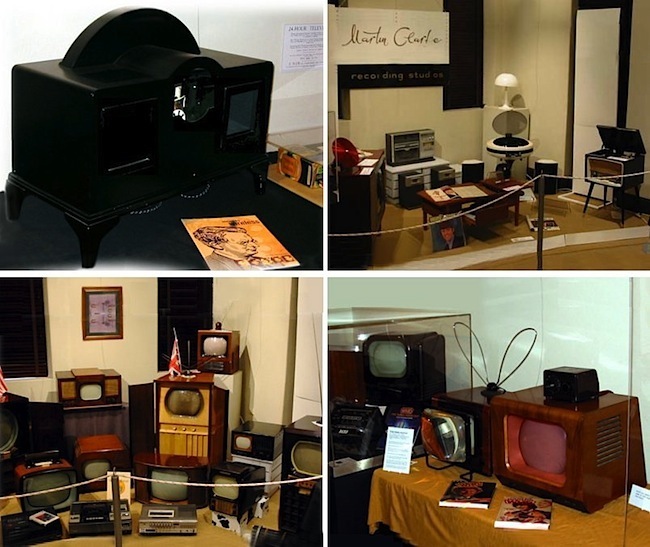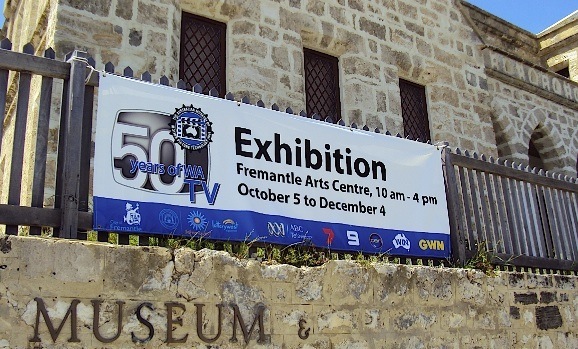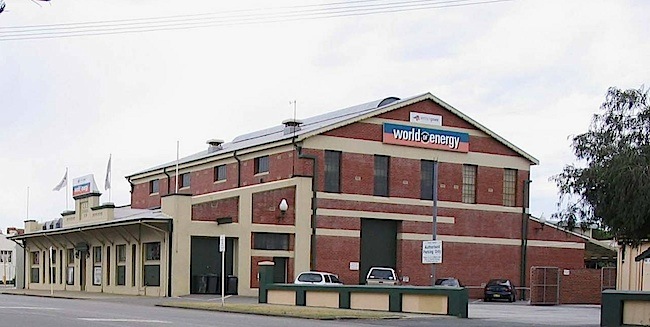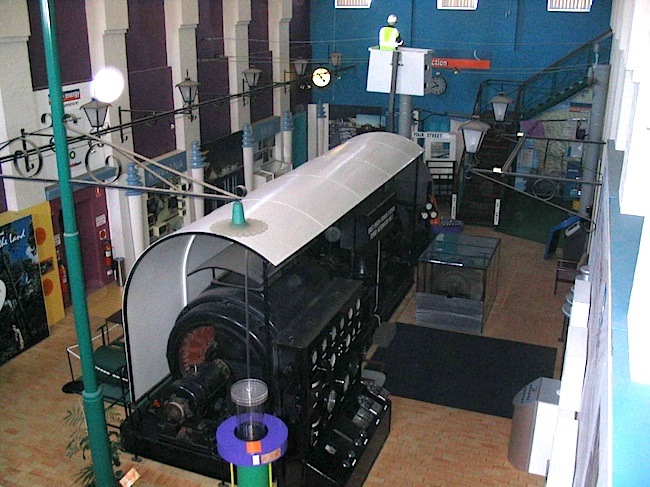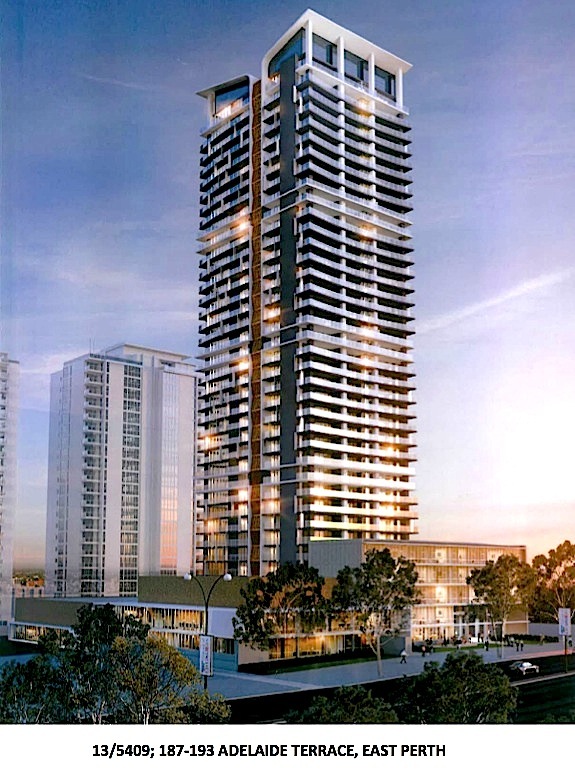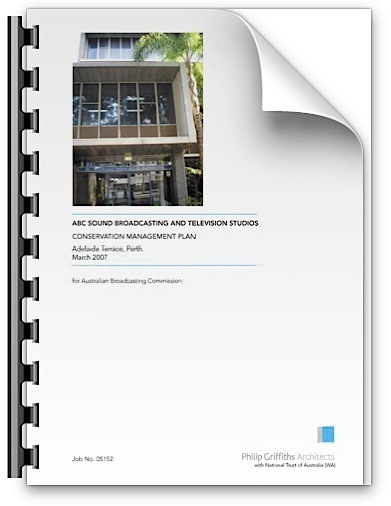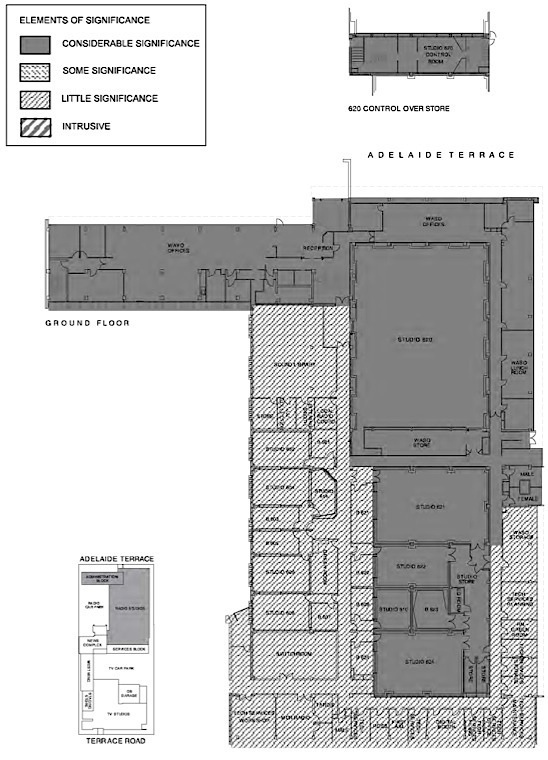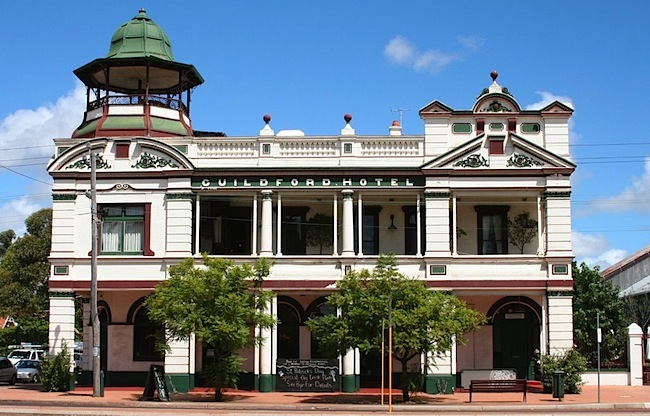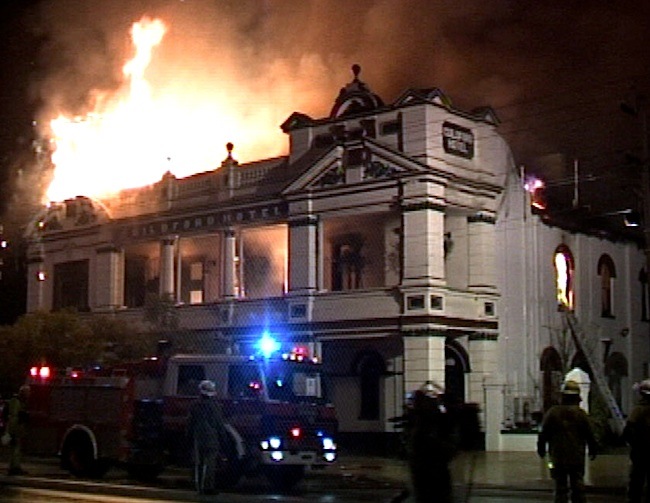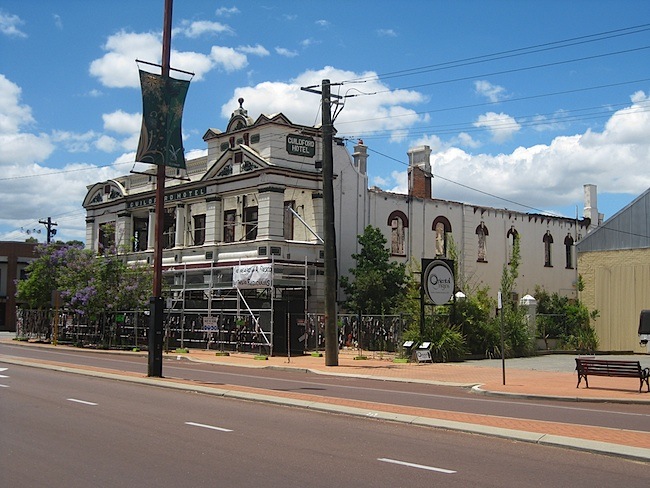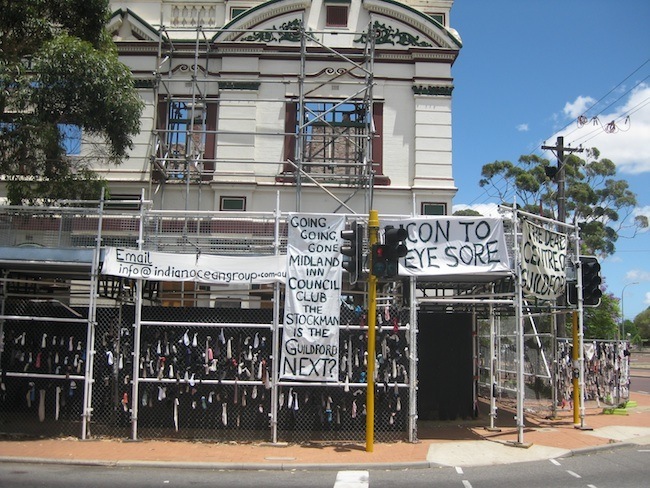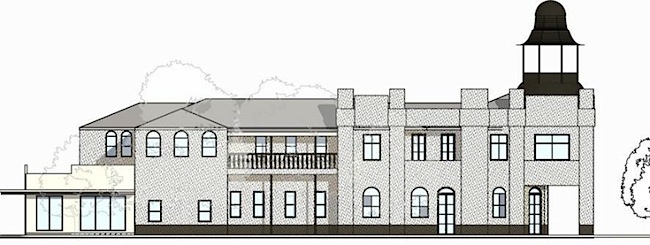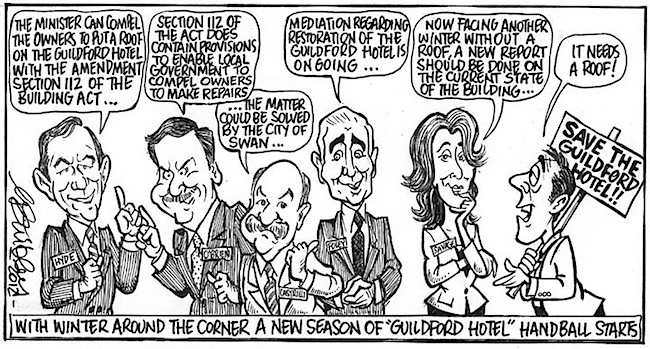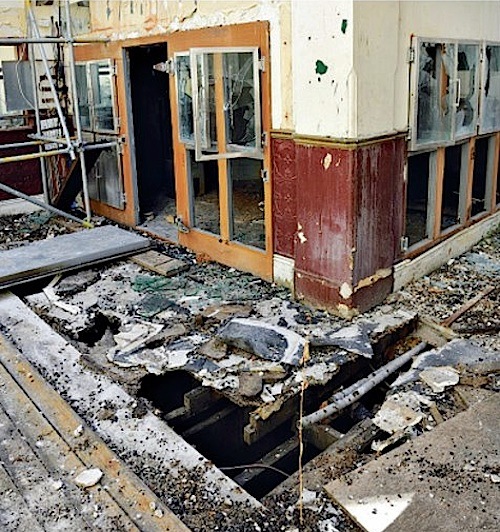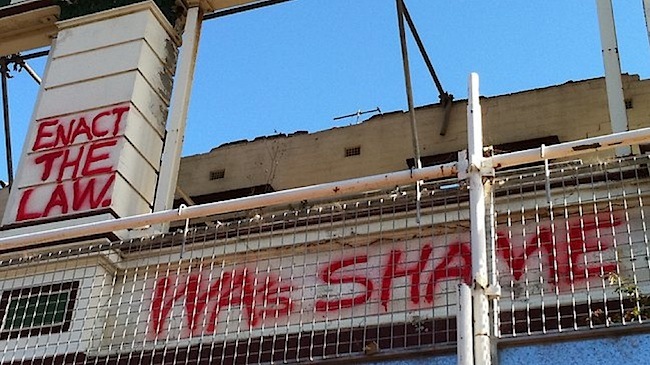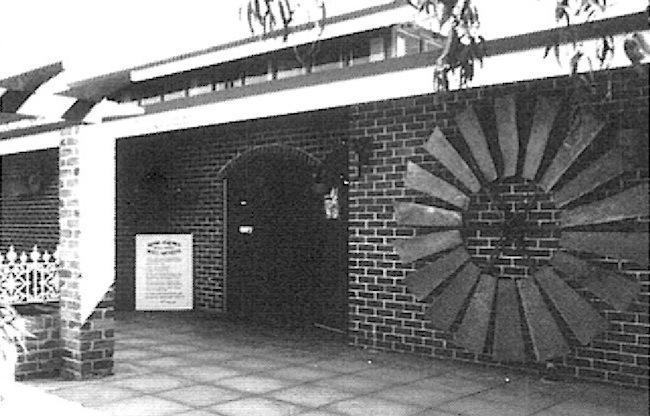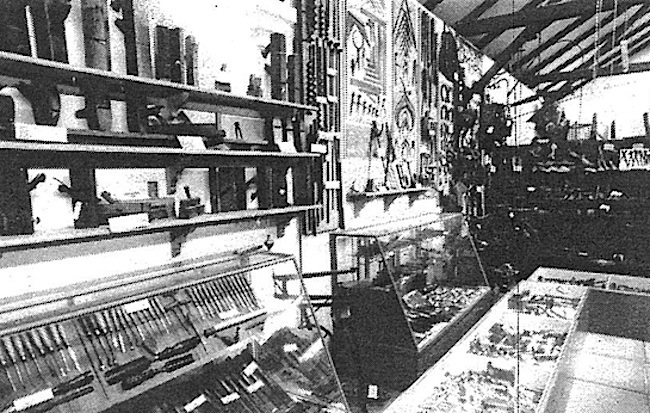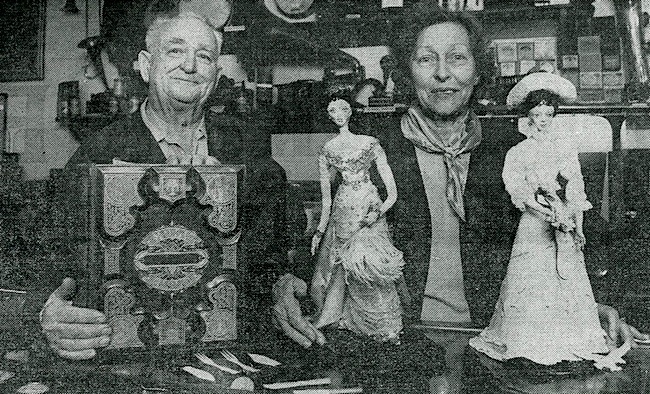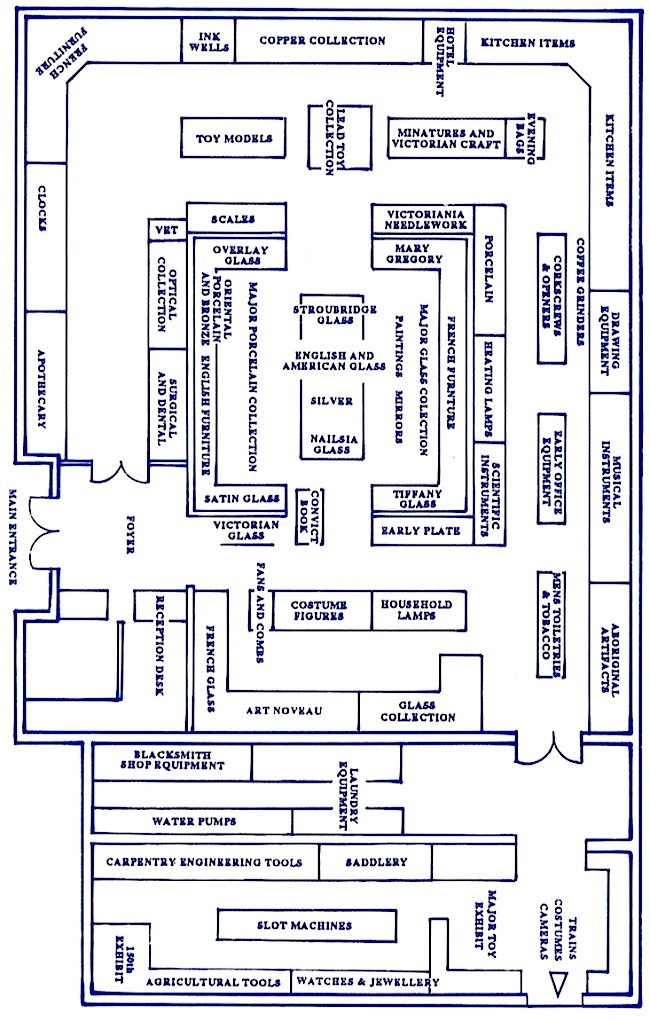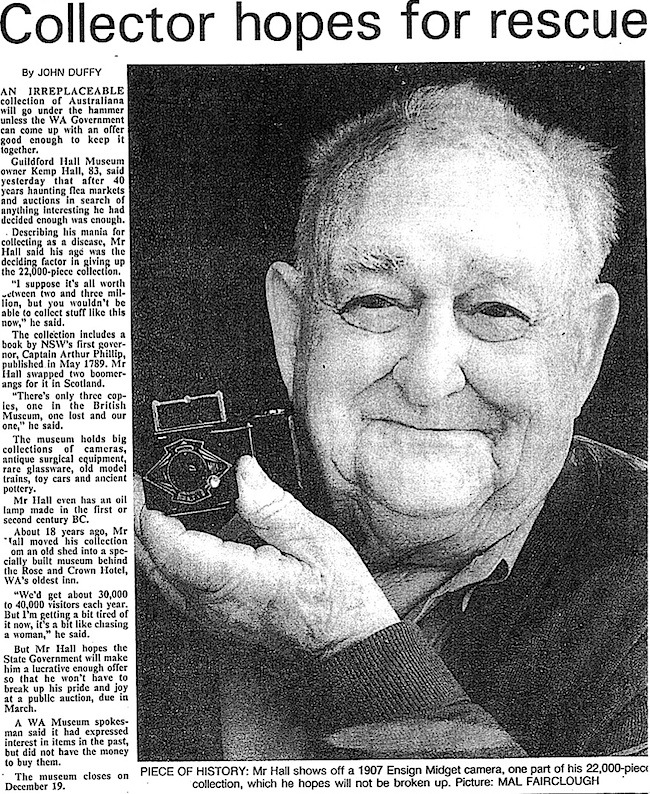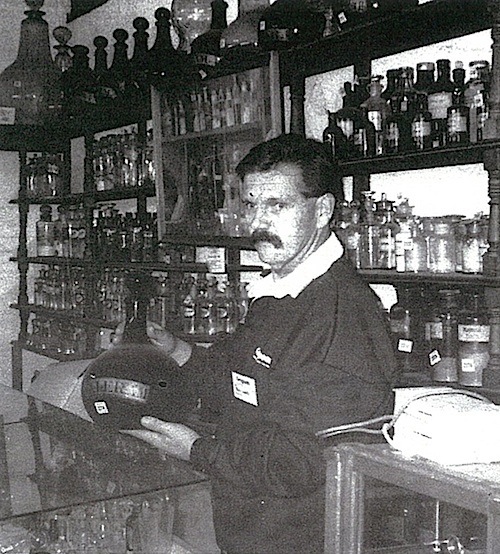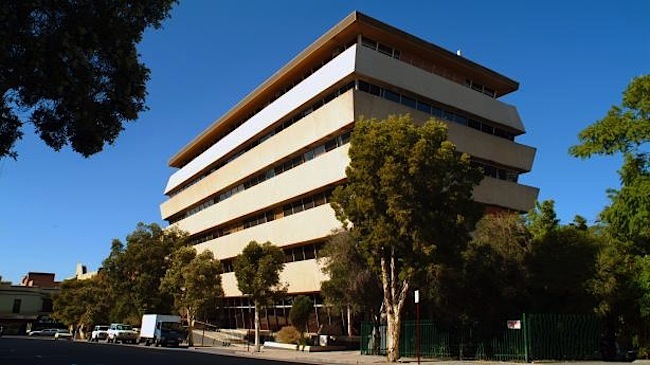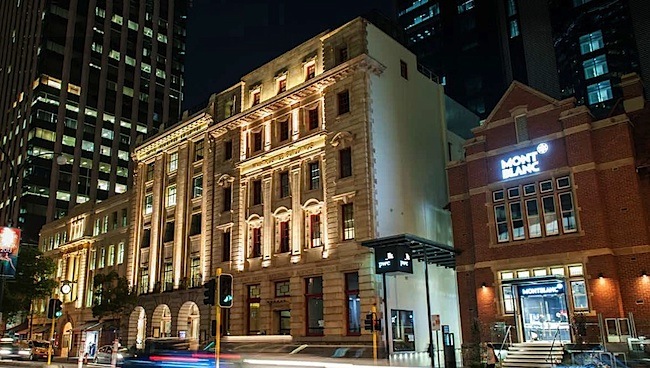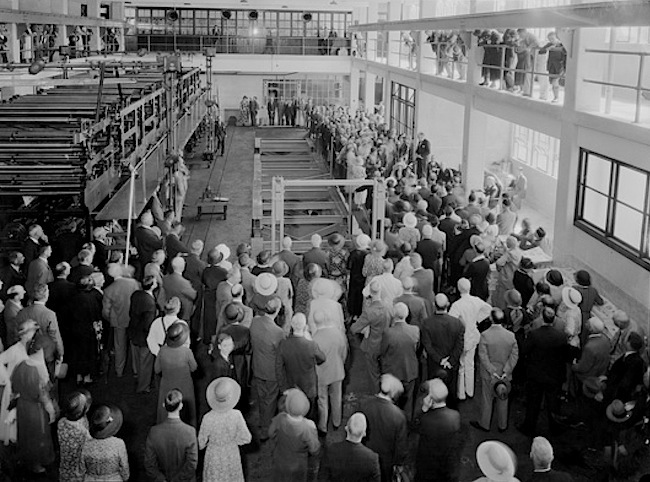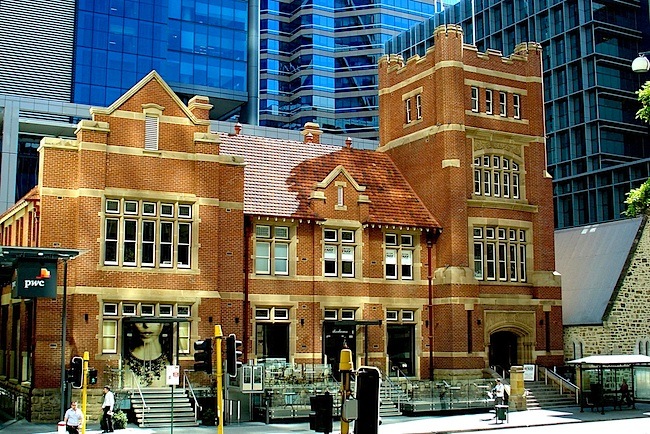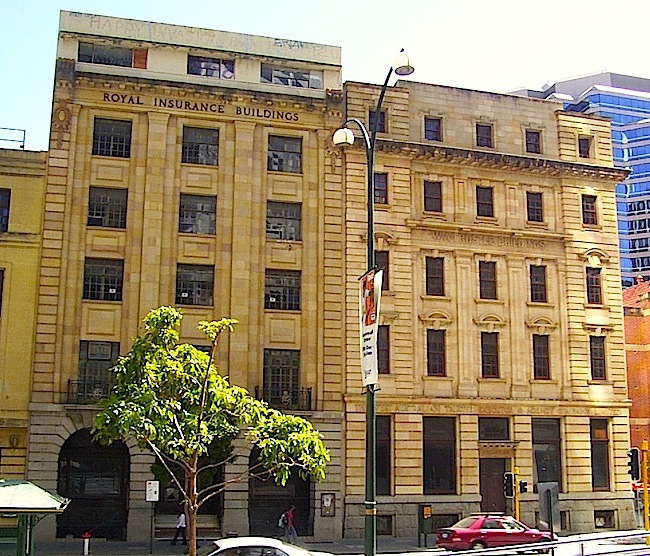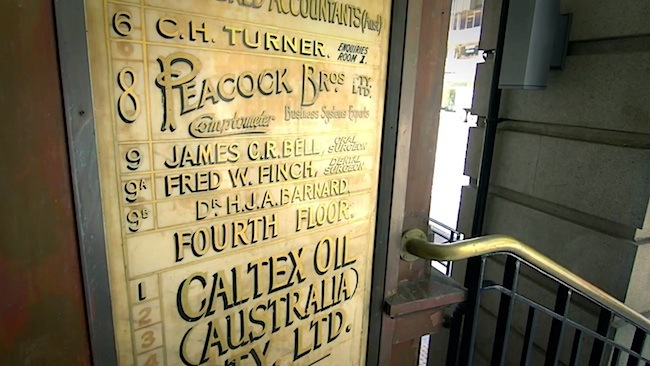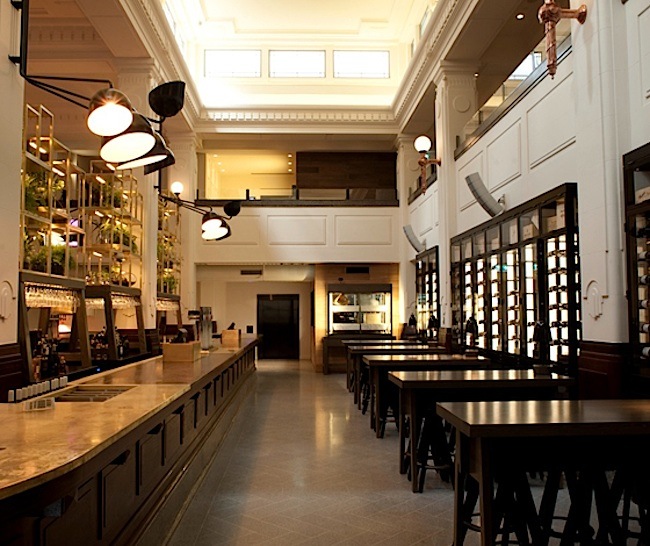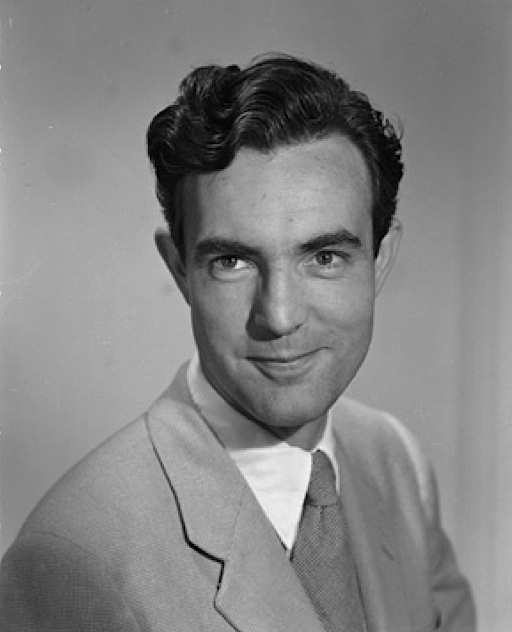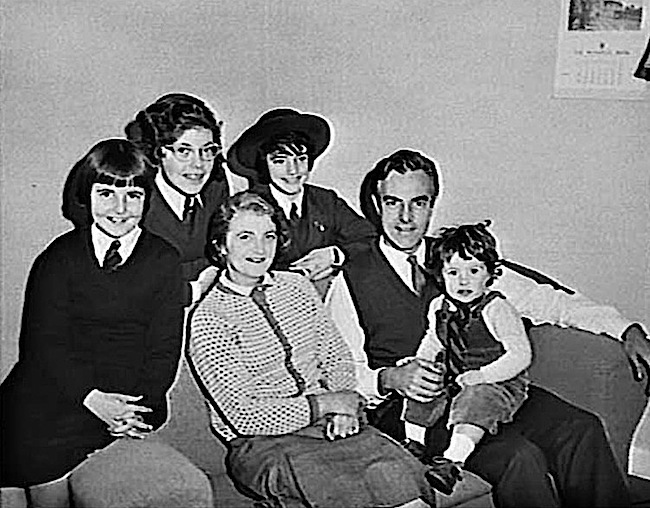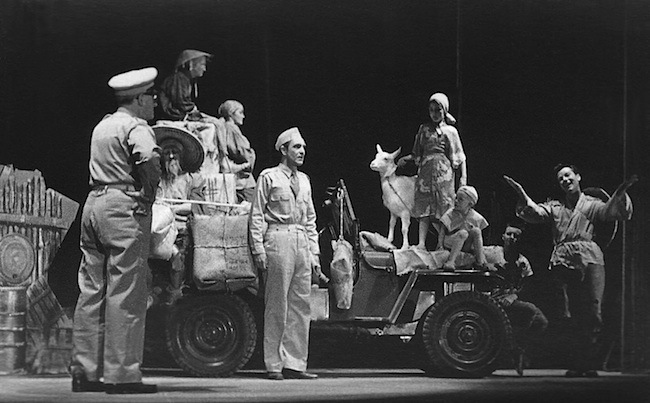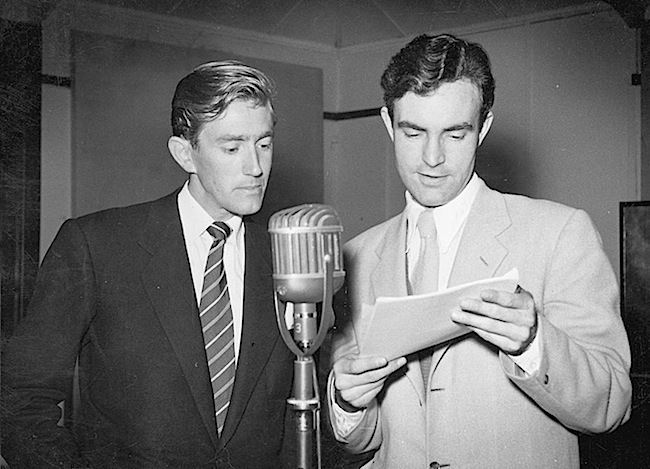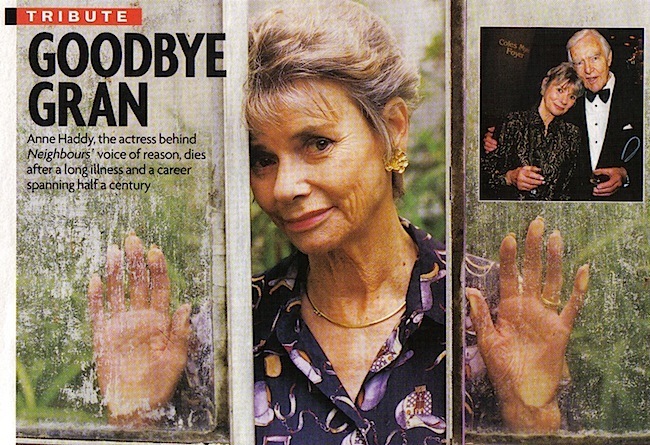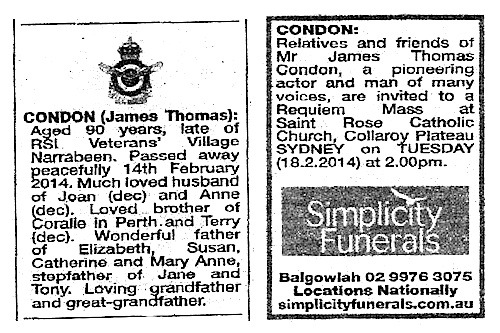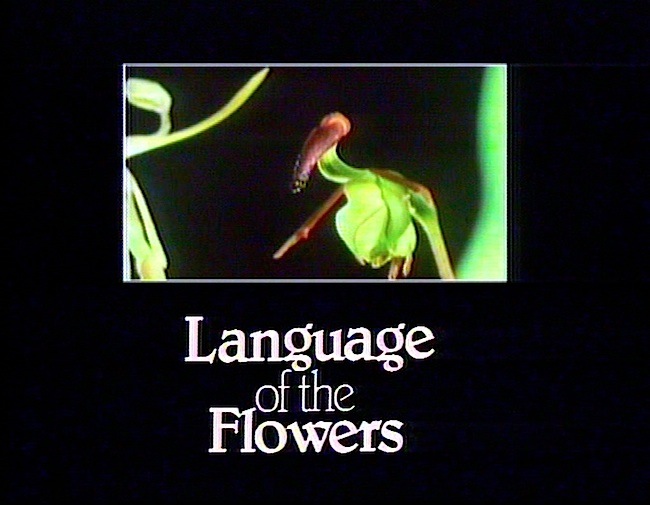
Language of the Flowers
Executive Producer
Douglas Burton
Writer Director
Don Shepherd
Narrator
Vincent Price
Photographed by
Michael Baker
Richard Malins
Kipling Baker
Douglas Burton
Editor
Alan Cox
A TVW Enterprises
and
Shepherd Baker Studios
co-production copyright 1981
Douglas Joseph Burton and James Winter Cruthers started their newspaper careers within five years of each other and worked together at the Daily News.
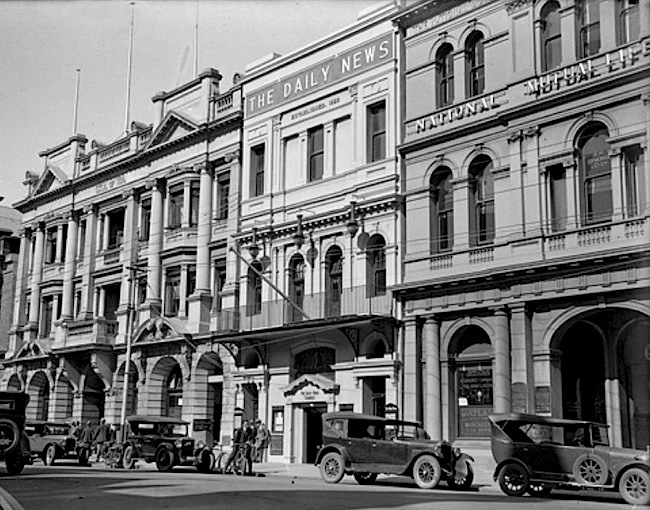
Courtesy of The State Library of WA ©
Later their six weeks together covering the British Monte Bellos Atom bomb in 1952 led to a lasting relationship based on professional respect, flies, heat, beer, dust and deprivation of life’s normal little luxuries. They were in the Pilbara while their team waited patiently or indeed impatiently for the bomb to blast Britain into the planet’s nuclear club. They were good mates in the true Australian way and their special relationship lasted for more than 60 years.
Now we fast forward to the eighties. Robert Holmes a Court as a one man raiding team was stalking Australian businesses, only the big and successful. He wanted TVW, BHP et al. His launch pad was a relatively insignificant WA minnow, Albany Woollen Mills.
Jim Cruthers was now under immense pressure from Holmes a Court.
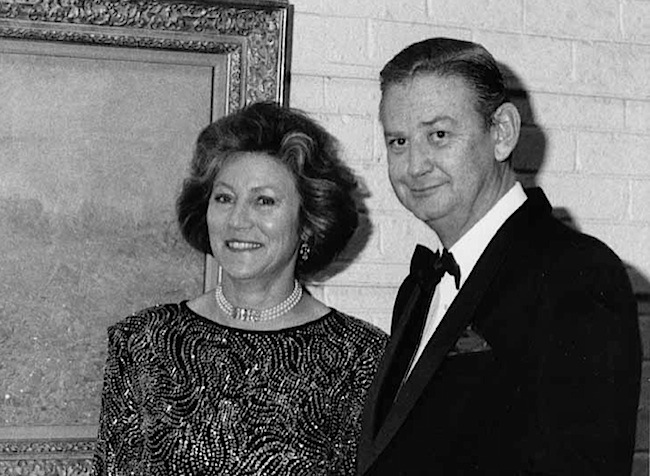
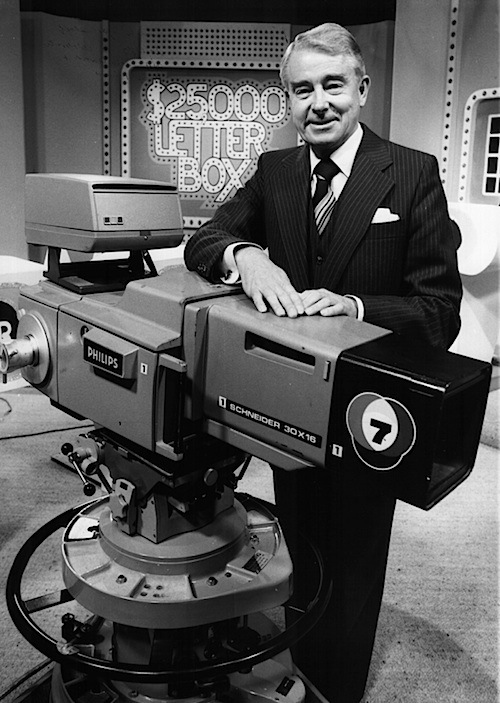
Doug had left WAN after his stellar career and worked at TVW courtesy of an offer from his mate Jim.
Doug always had a particular love for everything about WA. Many times he used his artistic skills to photograph outback scenes with the skills of some of our nation’s great artists. If anyone needed a lesson on composition then see DJB, his door was always open.
He had a particular love for the Pilbara and the Kimberley. He particularly loved our wonderful wildflowers from carpets of great colour in the pastoral areas and on to the Pilbara where the landscape, so baked and with its own rugged beauty springs into life again after a cyclonic drenching or even just modest seasonal rain.
He decided he wanted to make a program for TVW on wildflowers and Jim agreed.
One day the phone rang and Doug invited Don Shepherd (my then partner) and I to come to the station to have a chat on a project. The “chat” was a working lunch in the boardroom with Jim Cruthers and the deal was done. Thus DJB became Executive Producer of the project, JWC the paymaster and Language of the Flowers was in gestation.
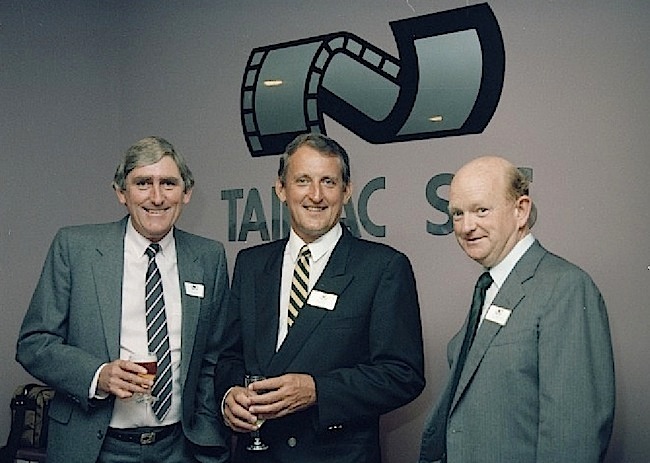
We needed a ‘coat hanger’ for the program. Don Shepherd researched and found it. A Professor of Biology at The University of Akron in Ohio, Warren Stoutamire also a lover of WA wildflowers researched and wrote scientific papers as well as making many field trips to WA to study….wait for it for “the Pseudocopulation of the Thynnid Wasp with West Australian Orchids”
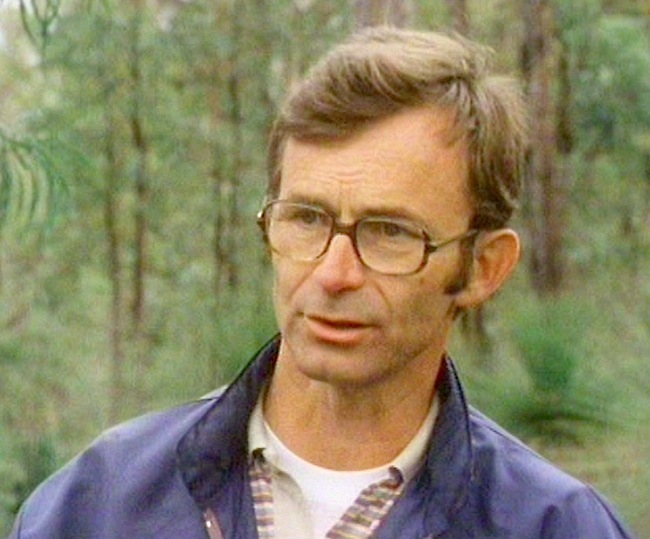
For those evolutionists or even the creationists what this actually meant was that a particular WA orchid, the Hammer Orchid had fashioned itself into the spitting image of a female Thynnid wasp. Even weirder was that the new male wasps hatched and started looking for mates before the wingless females hatched. As well there are other orchids using this form of deception.
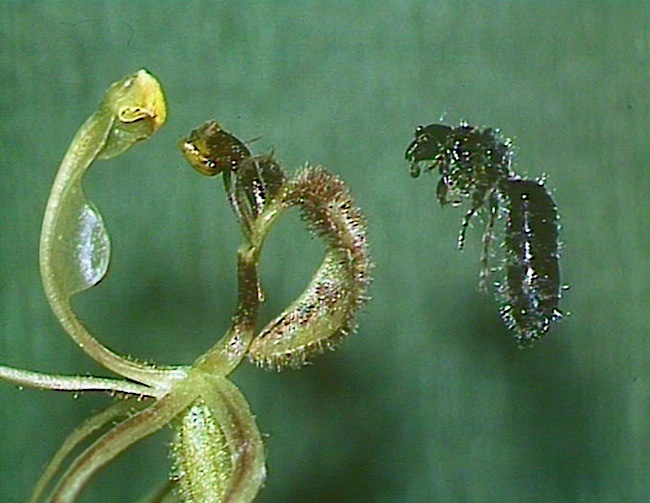
The female Thynnid Wasps climb to the top of a single green grass stick and wait for a passing male to swoop, grab them and fly away, mating on the wing and then I assume drop them where the result hopefully is not too much brain damage as the ladies hit the ground.
But here’s the really weird and super smart part. The orchids have evolved to hijack the male wasps for their own ends. They also sit on top of a single green strand and emit the very same sexual pheromones used by the wasps. Weird?
The male wasp, attracted by these pheromones, crash lands* into the orchid which has a hinge just under the flower catapulting the unsuspecting male into a large pollen mass, dislodging it at the same time. The male wasp probably thinks “boy that was really good, let’s go again” and armed with a large pollen mass on its head looks for more sex, visiting other orchids, repeatedly crash landing.* Here we have a clear case of a flower hijacking an insect for its own reproductive ends and the male wasp has his way with multiple couplings. It’s the perfect case of a win win.

*crash lands-landing (v): Oxford Dictionary: remarkably similar to WAN photographer Phil Martin’s Dambuster landings in Allied Lancasters as well as several other aircraft during WW2 which were efficiently destroyed (as a consequence of damage caused by enemy fire). Martin always claimed he should have been awarded a German Iron Cross because he wrote off so many Allied aircraft. He once asked his Dambuster Commanding Officer for permission to contact the German High Command to claim his Iron Cross. Permission was refused.
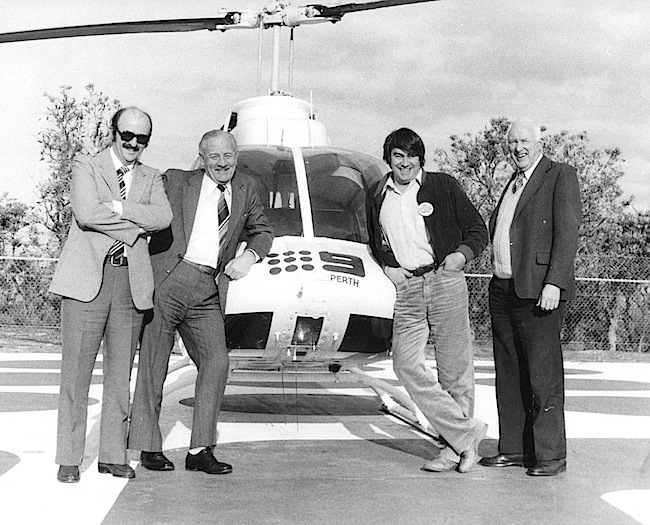
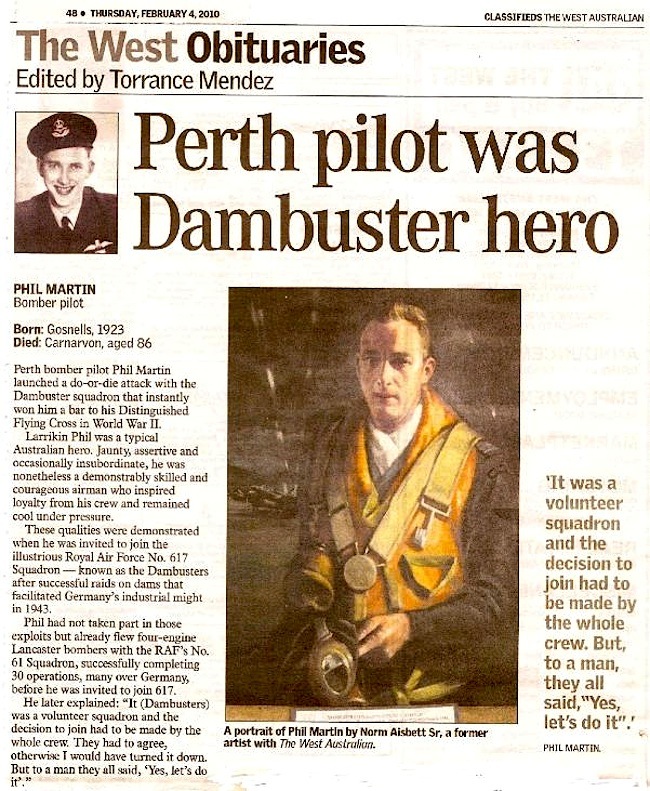
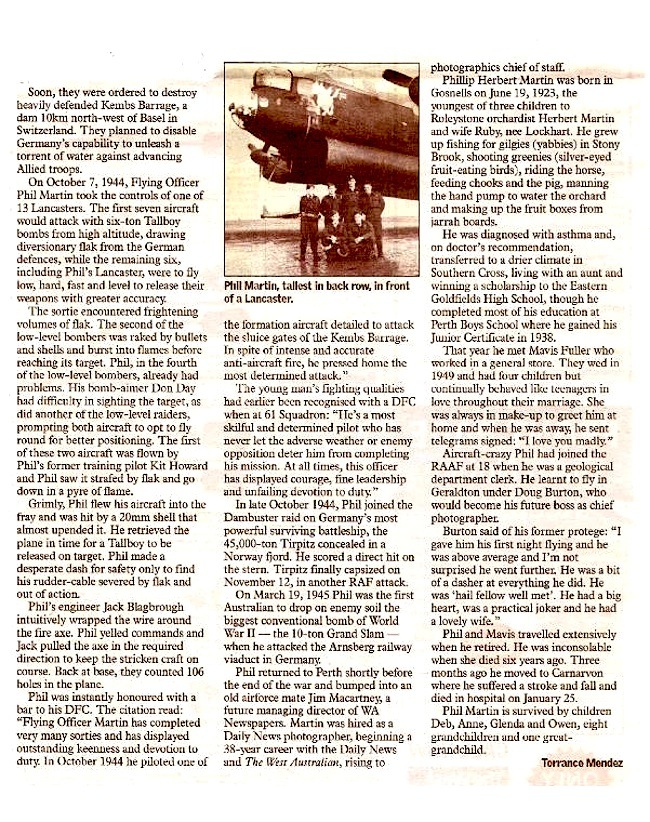 `
`
So far so good, now for the filming and of course we needed an internationally known voice so that TVW could on-market the film and recover some production costs. Another ‘win win’.
At this time some former Hollywood heavyweights had passed their use-by dates and were waiting for the phone to ring but it rarely did. These included stars like James Mason and many others
The ‘coat hanger’ was a bit spooky and Don came up with Vincent Price as the preferred voice. He negotiated and voila, Vincent agreed to do it at a very modest price! (sorry).
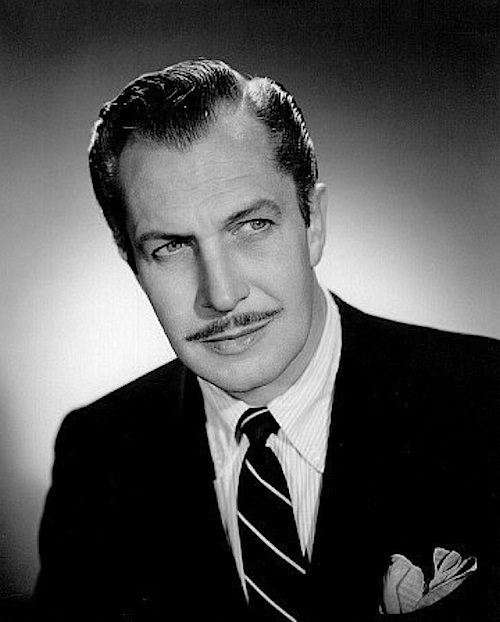
Don then fine-tuned his already good script for Vincent’s voice.
What was absolutely vital to the success of the documentary was to capture on film the “the Pseudocopulation of the Thynnid Wasp with West Australian Orchids”.
Don organised this and well-known cameramen, Richard Malins ACS and my son Kipling, using the then top of the range equipment. Today, even cave men don’t use it as we are well into the digital age where automation abounds.
They succeeded in spectacular fashion.
Then we needed wallpaper footage of the world renowned WA wildflowers so Doug called me when we knew the Pilbara was ablaze with colour. We organised a field trip. Arriving at the airport there was Doug and Jim Cruthers.
Doug, caring for his pal had convinced Jim to take a pause, smell the flowers in the Pilbara landscape. Meanwhile, Lone Ranger Robert stalked Australia’s corporate landscape.
We flew to Newman where a Landcruiser was waiting and within less than half an hour we were surrounded by a lovely landscape of wildflowers.
We based ourselves at the Wittenoom pub which provided a picnic lunch complete with a bottle of wine and a few cans of beer (the wine and beer were good the lunch was just OK… fine…hey we were in Wittenoom).
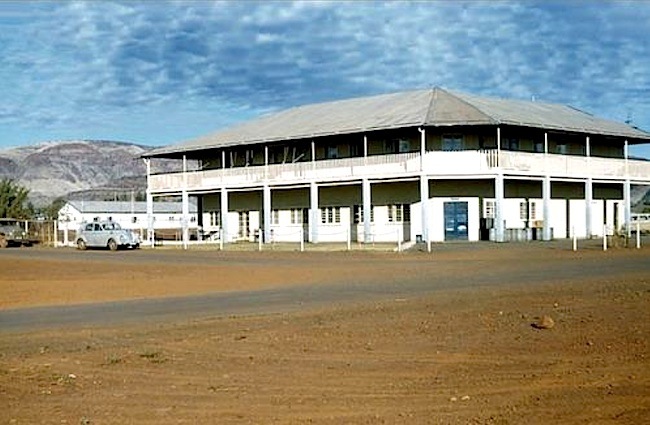
After an enjoyable morning photographing and looking at the flowers the rules were simple:
Lunch, choose a dry creek under the whitegums, have lunch, a drink and then Jim would just lie down in the creek bed and have an hour nap. This agenda, set by Jim was absolutely not negotiable.
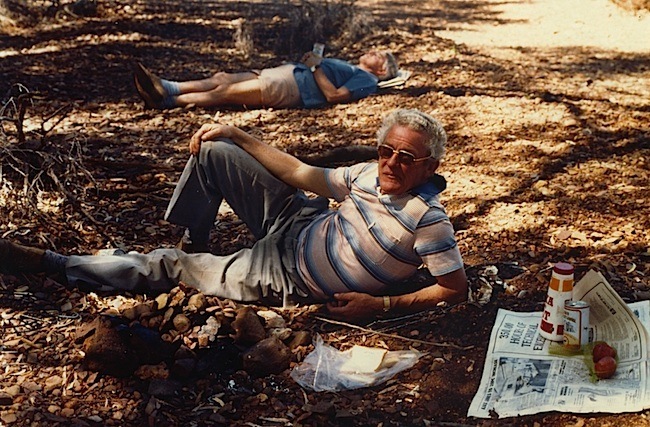
Sir James Cruthers taking a break with beer in hand with Doug Burton in the foreground
In the evening we would meet in the front bar of the pub for a pre-dinner drink. One night I was a bit late and Doug and Jim were onto their second beer.
In those days it was trendy but also convenient for some of us to use a handbag to hold wallet, credit cards and any other small items. As I entered the front bar of the pub, replete with my handbag all eyes fell upon me and there was a distinct audio pause. Quickly assessing the situation, outback front bar, cowboys and other typical outback types, three reasonably well dressed city slickers, one very suspect because of the handbag, I strode confidently towards DJB and JWC proclaiming in a loud voice “Jim I have found your lost handbag” placing it on the bar in front of him. Achievement, all eyes previously on me now swung to Jim.
Next for me was a field trip with the Professor to the pastoral areas North East of Mullewa so the Professor could investigate the northern range of his sexually charged insects.
The station owner, dressed as you would expect in moleskins, khaki shirt and a bushman’s felt hat and Blundstone boots escorted us to the wildflower areas on his station. As Professor Stoutamire, on his haunches, butterfly net in hand closely examined some specimens with a magnifying glass the station owner asked me “what’s he doing” to which I replied with a bit of a tease “he’s looking for a wasp having sex with a flower”.
“HE’S EXPLETIVE WHAT?” Again the tease as I repeated my previous line.
“You mean he’s come all the way from America for that, WHAT’S WRONG WITH HIM? He needs serious expletive help” he yelled.
Back in Perth it was now Post Production time where all the ingredients are melded together and Language of the Flowers was born.
TVW promoted it as a “special broadcast” aired it on a number of occasions and on sold it for international audiences.
Production methods and values today are much more sophisticated but remember this was 35 years ago and we were all pleased with what we had achieved.
Summing up, a good idea from DJB, approved and funded by JWC/TVW, a well made professional television special, a little time out for Jim Cruthers, a win for all involved.
Footnote1: My first job at WAN was an office boy for Mr Cruthers (as he was then) who had just been appointed Magazines Editor of WAN. His office was in close proximity to the west photographic department which I visited probably too often ignoring some of my office boy responsibilities. My father Bill Baker was a journalist and an editor of the Countryman and I think would have liked me to follow him into journalism. I chose photography and constantly harassed Doug for a cadetship. Once he said “for goodness sake stop nagging me”. A few days later he called me into his office and told me that Mr Macartney had granted me a cadetship which could prove that maybe nagging works a treat!
Footnote 2: Generally as a news photographer you photograph an event. You don’t compose it. Sometimes however you have an opportunity to compose and then be published. Later in my cadetship I became fixated with a picture composed and taken by Doug in his beloved Pilbara and subsequently published. It demanded publishing.
It was quintessentially Australian, a creek bed, white trunked eucalypts on either side of the creek. Drovers gently moving their cattle over the dry creek bed. It was an artist or photographers dream composition. Doug had set his easel up in the most perfect place. I asked him how he knew, who taught him this? He thought for am moment and said firstly “I don’t really know, maybe it’s instinctive or it could be a gift” and then graciously added “you have this gift too” Later in my career as a movie cameraman DOP and Director I realised that the gift of composition had been graciously passed on to me. I must add that a WAN journalist turned photographer, the understated Reg Morrison’s feel for the Australian landscape is extraordinary. Doug recognised this and Reg was despatched many times, teamed with another photographer to the North of the state on roving assignments, pictures, captions and stories. I have studied many Australian landscape photographers work and I firmly believe that Reg’s work is absolutely at the forefront of Australia’s landscape photographic artists. As Doug said “you have the gift.” Reg certainly has this indefinable and mysterious gift. His work can be seen on his web site. It’s really extraordinary. http://regmorrison.edublogs.org/
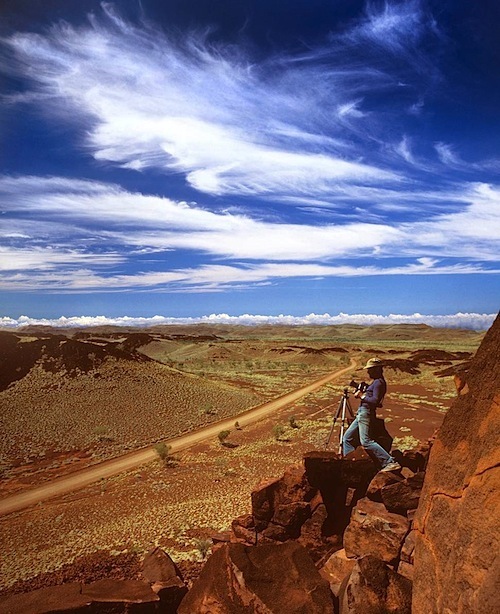
In 1980, the TVW Enterprises net operating profit for the year increased 8.1% to $4,600,000 and they paid a dividend of 30%. But this outstanding success story had attracted the attention of corporate raiders Robert Holmes à Court and Alan Bond.
Sir James Cruthers retired as Chairman and Managing Director of TVW Enterprises in 1981 and Robert Holmes à Court became chairman. The same year President Reagan was shot, a dingo took Lindy Chamberlain’s baby, the ill fated Diana Spencer married Prince Charles and the now retired space shuttle was launched.
Shortly after the Holmes à Court takeover most of the senior executives of TVW started leaving: Howard Shephard (1981), Joseph Sweeney (1981), Max Bostock (1982), Bill McKenzie (1982), Russel Perry (1983), J Barrey Williams (1983), Alf Binks (1983), Ken Kemp (1983), Marion Leyer (1985), and Bob Page (1985).
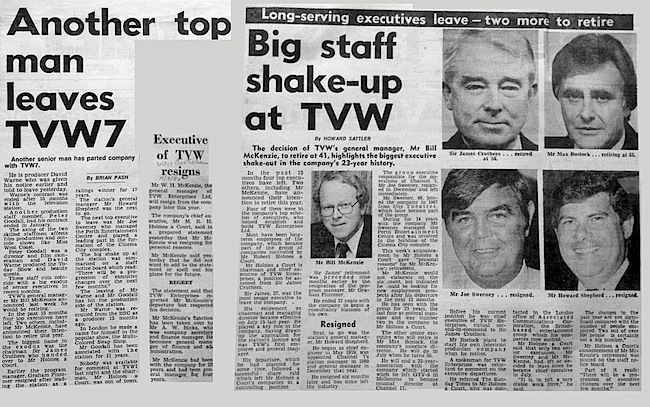
Sir James with his most capable band of executives and hard working and enthusiastic staff built the company up from scratch to be much diversified and cash rich, with fingers in many pies. Arena and local television productions, live theatre, movie making, a radio network, a lion park, a hard top and drive-in cinema chain, SAS Adelaide, and much more as TVW Enterprises.
There was a lot of blood, sweat and tears invested in the station by the pioneers in the industry which created a bond between not only the workers, but also management. For many staff sacrifices were made in the early days to get the station operational and financially viable. In fact the board considered handing back the licence in the first four months owing to the losses being generated. Many key employees worked extraordinary long hours, sacrificing family life and in some cases marriages to establish the company.
Much changed with the takeover when TVW Enterprises no longer remained a public company. The focus was now on finding other uses for the assets.





